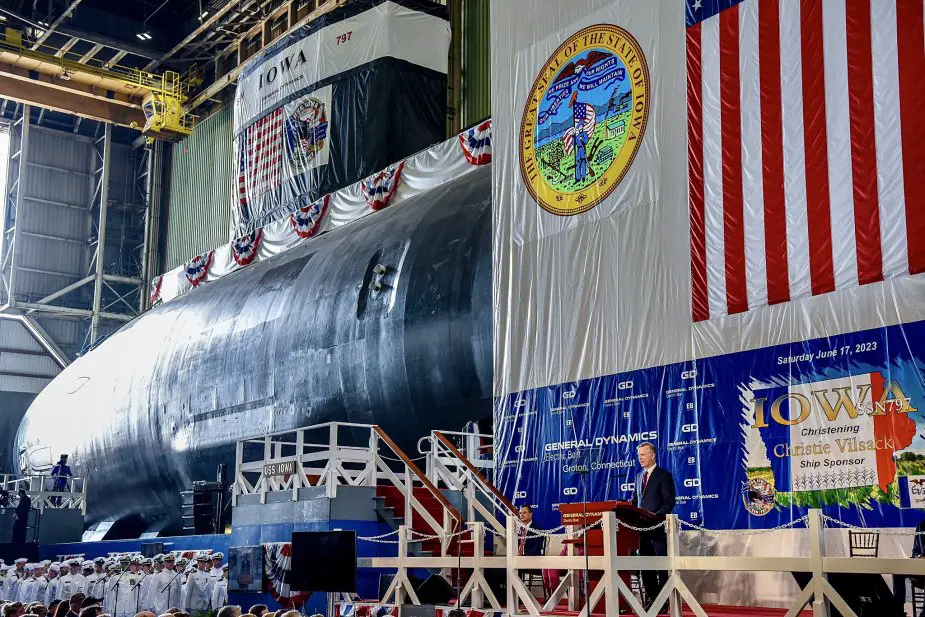Breaking news
US Navy christens Virginia class fast attack submarine USS Iowa.
According to information published by the US DoD on June 16, 2023, in a time-honored ceremony, the Navy celebrated the christening of its latest Virginia-class fast-attack submarine, soon to be known as the USS Iowa (SSN 797).
Follow Navy Recognition on Google News at this link
 Virginia class submarine USS Iowa. (Picture source: US DoD)
Virginia class submarine USS Iowa. (Picture source: US DoD)
As per naval tradition, the ship's sponsor, Mrs. Christie Vilsack, played a central role in the proceedings, smashing a bottle of sparkling wine on the submarine's bow.
The soon-to-be USS Iowa (SSN 797) is not the first Navy vessel to bear the name of this state, but it is indeed the first submarine to do so. Other naval vessels named after the state have been battleships and a repurposed merchant ship, which, however, was never commissioned.
About the class
The Virginia-class submarines are powerful and versatile maritime vessels, tailored to excel in both littoral and deep-sea environments. They have a notable displacement of 7,800 tons, a length of 377 ft (115 m), a beam of 34 ft (10.4 m), and a draft of 32 ft (9.8 m).
These submarines are powered by the S9G reactor and an auxiliary diesel engine which enables them to reach impressive speeds of up to 25 knots (46 km/h; 29 mph). Notably, their endurance capabilities allow them to remain submerged for up to three months. These submarines are capable of operating at test depths greater than 800 ft (244 m), further expanding their versatility and mission capabilities.
The Virginia-class submarines can be crewed by 15 officers and 120 enlisted men. For armament, they come equipped with 12 VLS tubes and 4 x 21-inch (530 mm) torpedo tubes designed for Mk-48 torpedoes. In addition, they are outfitted with BGM-109 Tomahawk.
These submarines are designed for a broad spectrum of missions. Their stealth, endurance, mobility, and firepower position them to carry out anti-submarine warfare, anti-surface ship warfare, strike warfare, and special operations forces support. They also excel in intelligence gathering, surveillance, reconnaissance, irregular warfare, and mine warfare.
Furthermore, they are instrumental in supporting five of the six core capabilities of maritime strategy – sea control, power projection, forward presence, maritime security, and deterrence.
As such, these submarines play a pivotal role in contributing to regional stability and future peace. Their ability to operate anywhere international law permits sets the standard and paves the way for other vessels to do the same.

























